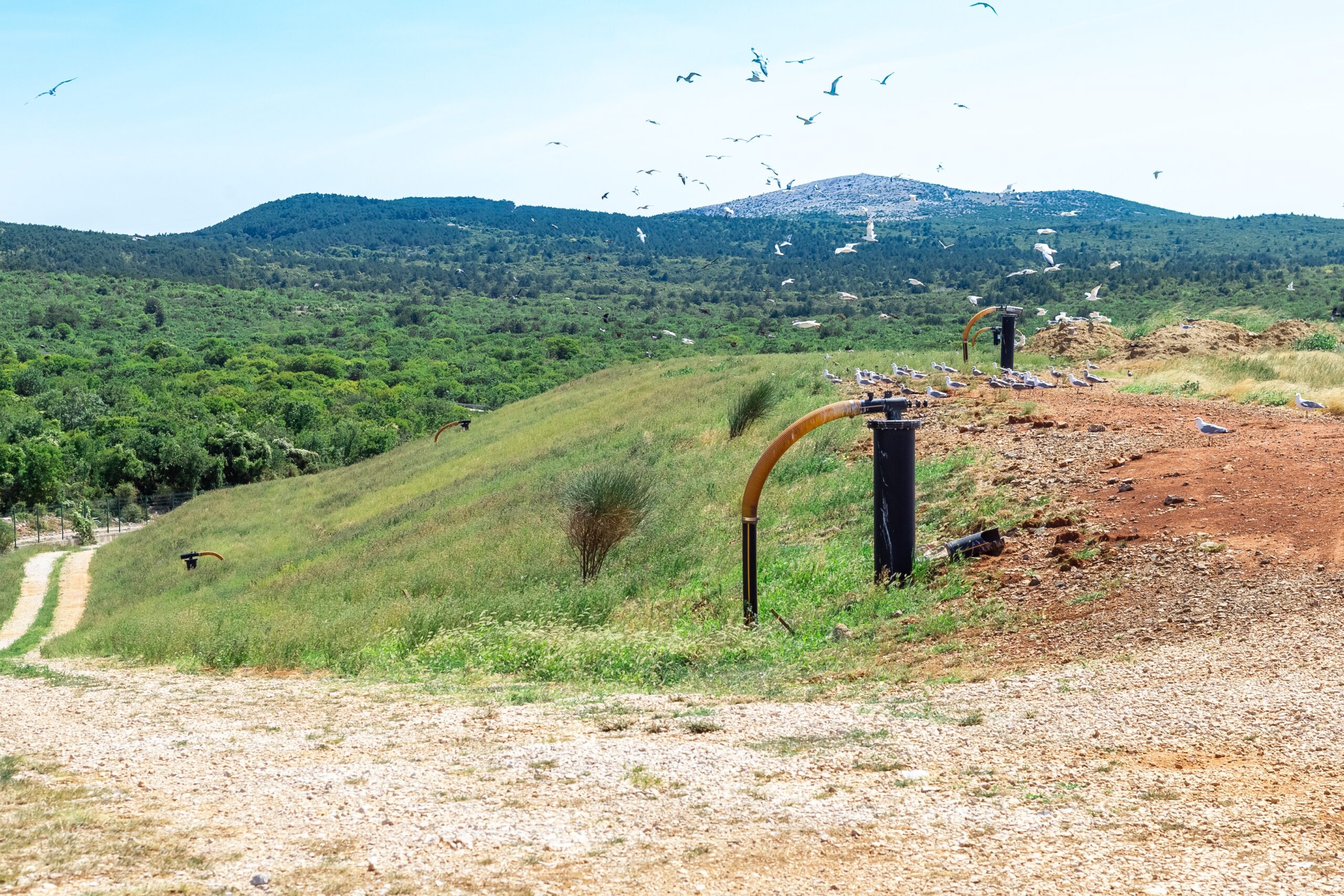Selective Carbon Dioxide Capture and Conversion from Landfill Gas
Investigator: Prof. Christopher J. Barile, Department of Chemistry, University of Nevada, Reno
Start Date: June, 2024
Award Amount: $182,616
Proposal Justification & Objectives
Municipal solid waste landfills are responsible for 15% of CH4 emissions in the U.S. through the generation of landfill gas. Because landfill gas consists of about equal volumes of CO2 and CH4, CO2 emissions from landfills are also substantial. While landfill gas can be used directly as a medium-Btu fuel, upgrading the gas to a more energy dense high-Btu fuel comprised of pure CH4 is more valuable. Although several technologies are employed to upgrade landfill gas, these existing methods are less than ideal due to inefficiencies associated with gas separation or additional pretreatment steps needed to remove water and other impurities.
We propose to investigate the use of recently developed porous metal-organic framework (MOF) materials (CALF-20 and related composites) for the selective and efficient adsorption and purification of CO2 to upgrade landfill gas to high-Btu fuel (Objective 1). To mitigate CO2 emissions from landfill gas, we will also design new reactors that electrochemically convert the captured CO2 to ethanol, a value-added product (Objective 2). Taken together, this research will lay the groundwork for developing innovative, practical technologies that increase the sustainability of landfills and contribute to a more circular economy, key aspects of the EREF’s strategic research plan. The following research objectives will be accomplished.
Upgrade landfill gas to high-Btu fuel using MOFs
Evaluate ability of CALF-20 to separate CH4 from different gas mixtures
Modify CALF-20 to enable high-Btu fuel without H2S impurities
Test CALF-20 with modeled and real landfill gasses
Electrochemically convert CO2 captured from landfill gas to ethanol
Convert CO2 to ethanol with an inexpensive substrate
Convert CO2 to ethanol with inexpensive self-assembled monolayers
Increase the electrocatalyst current density for CO2 to ethanol production
Related Articles
Self-Assembled Monolayers on Copper Promote Electrochemical Carbon Dioxide Reduction to Methane



